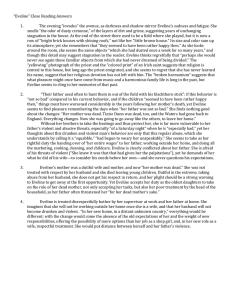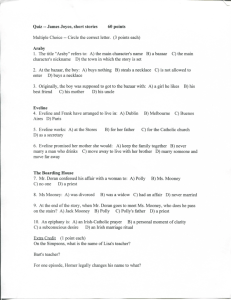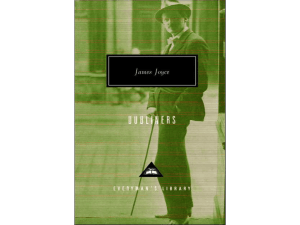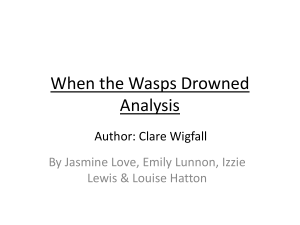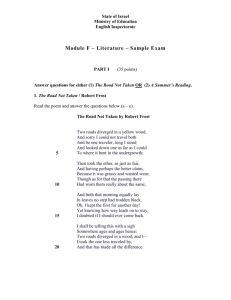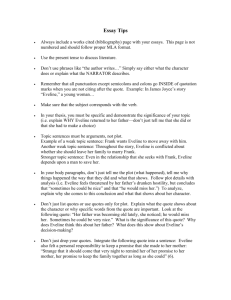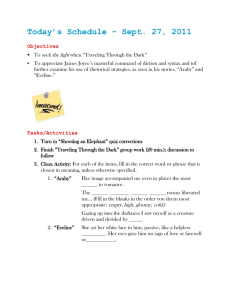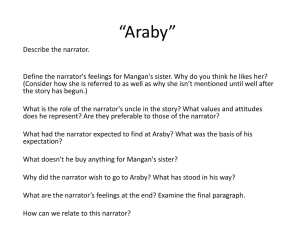When the Wasps Drowned by Clare Wigfall Growing up Themes
advertisement
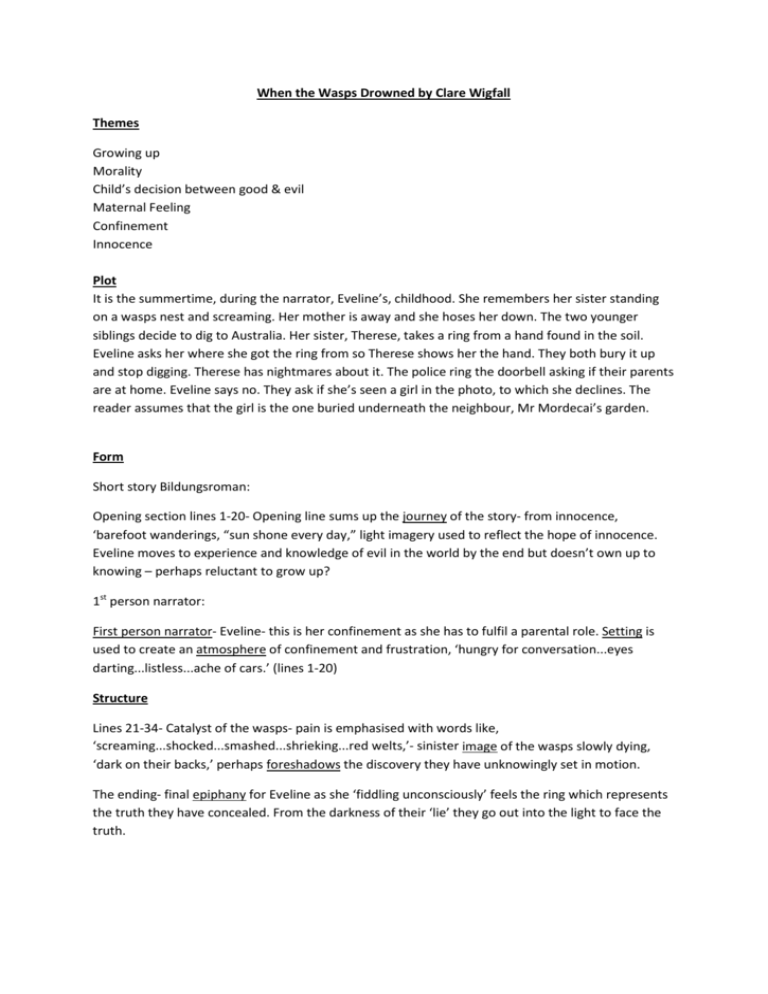
When the Wasps Drowned by Clare Wigfall Themes Growing up Morality Child’s decision between good & evil Maternal Feeling Confinement Innocence Plot It is the summertime, during the narrator, Eveline’s, childhood. She remembers her sister standing on a wasps nest and screaming. Her mother is away and she hoses her down. The two younger siblings decide to dig to Australia. Her sister, Therese, takes a ring from a hand found in the soil. Eveline asks her where she got the ring from so Therese shows her the hand. They both bury it up and stop digging. Therese has nightmares about it. The police ring the doorbell asking if their parents are at home. Eveline says no. They ask if she’s seen a girl in the photo, to which she declines. The reader assumes that the girl is the one buried underneath the neighbour, Mr Mordecai’s garden. Form Short story Bildungsroman: Opening section lines 1-20- Opening line sums up the journey of the story- from innocence, ‘barefoot wanderings, “sun shone every day,” light imagery used to reflect the hope of innocence. Eveline moves to experience and knowledge of evil in the world by the end but doesn’t own up to knowing – perhaps reluctant to grow up? 1st person narrator: First person narrator- Eveline- this is her confinement as she has to fulfil a parental role. Setting is used to create an atmosphere of confinement and frustration, ‘hungry for conversation...eyes darting...listless...ache of cars.’ (lines 1-20) Structure Lines 21-34- Catalyst of the wasps- pain is emphasised with words like, ‘screaming...shocked...smashed...shrieking...red welts,’- sinister image of the wasps slowly dying, ‘dark on their backs,’ perhaps foreshadows the discovery they have unknowingly set in motion. The ending- final epiphany for Eveline as she ‘fiddling unconsciously’ feels the ring which represents the truth they have concealed. From the darkness of their ‘lie’ they go out into the light to face the truth. Language • • • • • Lines 39-46- The presentation of Eveline’s physical/sexual maturing- on the edge of knowledge, ‘I’d fashioned a bikini...just below my nipples,’ Lines 58-61- powerful visual image of Eveline as mother and innocence of Theresa, ‘curled in a damp embrace...breathing hotly against my hip...arm was flung out,’- this emphasises the neediness of the smaller children. Lines 73-80- Discovery of the hand- setting used again to create the tension, ‘unbearably quiet,’ and the image itself, ‘a pale hand reached towards us,’ already sounds nightmareish. Lines 108- 111- When the police arrive, Eveline is presented visually again as prematurely sexually mature in a disturbing image, ‘Pouting Smartie-red lips,’ The ending- final epiphany for Eveline as she ‘fiddling unconsciously’ feels the ring which represents the truth they have concealed. From the darkness of their ‘lie’ they go out into the light to face the truth. Example of analysis on form & language (and a bit of structure thrown in!) (P)- The opening line sums up the essential journey that this short story presents to us, the journey from a questionable innocence to experience and knowledge of evil, reflecting the form of a bildungsroman (E)- ‘brought an end to our barefoot wanderings,’ (T and E)- The meaning of this cannot be wholly reached until the end of the story, when we realise that this image is in fact a symbol of a loss of innocence and childhood. When Eveline makes herself a home-made bikini to cover herself, just as Eve covered herself when she lost her innocence and purity in the Garden of Eden, the end of being barefoot is almost symbolising how this summer’s events have changed everything in their lives. (O)- What is more subtle in this story, is that the innocence does not feel obvious or pure even at the beginning of the story. The setting of heat and confinement seems to suggest the children, Eveline in particular, are straining to escape already, ‘hungry for conversation...eyes darting...listless...ache of cars.’ These initial yearning and frustrated images climax in actual torturous pain in the second section, which could imply how fundamentally alone these children seem to be.


